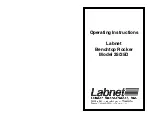
11
A
B
Lateral Transfer Between Adjacent Surfaces
Follow these 15 steps
To transfer the patient use one of the following
spreader bars
(See Fig. 14 )
:
• 2-point spreader bar
(A)
• 4-point spreader bar
(B)
For lift instructions, see respective lift
IFU
.
NOTE
Bed in this
IFU
refers to stretcher, trolley,
gurney or other receiving surface.
1. Place the lift nearby.
2.
Apply bed brakes and adjust the height of the bed
to an ergonomic flat position, if possible.
WARNING
To avoid injury, make sure there is another
caregiver present by the bed and/or raise
the side rail on the side the patient is
moved towards.
3.
Position the patient’s arms on top of the patient’s
body.
NOTE
To avoid skin friction, use an Arjo Sliding sheet/
tube and place it under the patient’s legs and
feet.
(See Fig. 15 )
See
MaxiSlides IFU.
4.
Positioning the:
•
4-point spreader bar
across the patient, with
the centre above the patient’s navel. Place the
wider side of the spreader bar towards the
patient’s shoulders and the narrow part towards
the patient’s hip.
•
2-point spreader bar
across the patient,
with the centre above the patient’s navel.
(See Fig. 15 )
5.
Lower the spreader bar to enable the straps to
be attached. Caregiver should always hold on to
the spreader bar to avoid swinging movements.
(See Fig. 16 )
6. Attach the loops. Use the loop lengths that gives
the best patient support and comfort. Use the
appropriate number of loops that provides the best
suitable patient support during the lateral transfer.
WARNING
To avoid the patient from falling, make sure
that the sling attachments are securely
attached before and during the lifting
process.
7. Adjust the receiving bed to flat position and equal
height of the bed the patient is laying on.
8.
Apply the brakes on the receiving bed and raise the
side rail on the side the patient is moved towards.
WARNING
To avoid injury, make sure that the patient’s
arms are placed inside of the sling
9.
WARNING
To avoid injury, make sure there is another
caregiver present by the bed and/or raise
the side rail on the side the patient is moved
towards.
Make sure:
• the side rail furthest away on the receiving
bed is raised or another caregiver is present.
(See Fig. 17 )
• there is no open space between the transferring
surfaces.
10.
Slightly lift the patient to create tension in the
straps and:
•
pay attention to tubes, drains, lines etc. if any,
• make sure all loops are securely attached
Fig. 14
Fig. 15
Fig. 16
Fig. 17






































